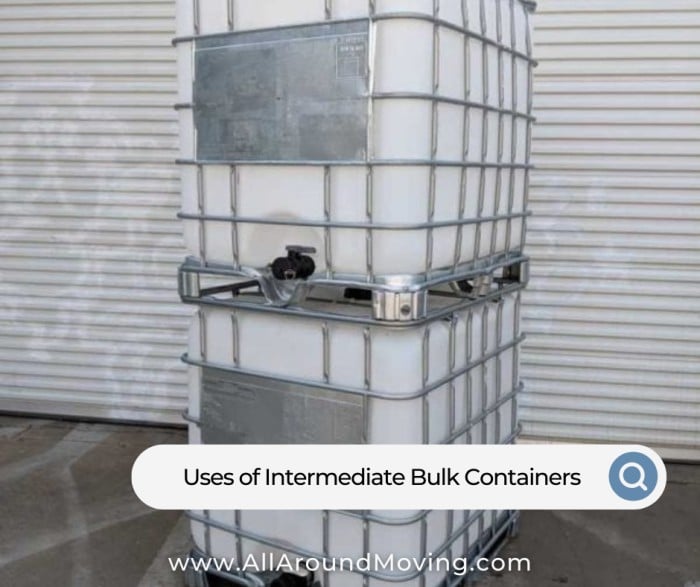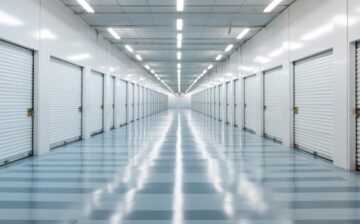Intermediate Bulk Containers, often known as IBCs, are utilized for the storage and transportation of a wide variety of solids and liquids. They are often built out of plastic of an industrial grade and can either have a stiff or flexible structure. Because of their cubic form, they take up less space in storage than barrels with a cylindrical shape. IBCs are available in sizes that are not as large as their maximum capacity of storing materials, which is 1000 liters. Using IBC reconditioning technologies, it is simple to clean IBCs, which enables transportation businesses to save money and make better use of their resources.
The transportation of chemicals, granulated food, petrochemical products, paints, biological waste, and wine are the primary applications for intermediate bulk containers (IBCs). In order to reuse the IBCs, it is very necessary to eradicate any and all traces and remnants of prior cargoes. When it comes to IBC reconditioning, larger haulage firms typically have their own on-site systems, whilst smaller haulage companies typically hire reconditioning services.
Olivier J. L. D’Hollander, a Belgian inventor, only received a patent for his intermediate bulk container design in the year 1993. This makes intermediate bulk containers a relatively recent innovation. Because of the numerous benefits associated with their utilization, they are rapidly taking the place of conventional cans and barrels. The fact that they are dust tight, which prevents contamination and leaking, is one of the most significant advantages.
The Many Benefits That IBCs Offer
IBCs from Verde offer a number of benefits that are not shared by conventional barrels and other types of cylindrical shipping containers. These features include recyclable materials, effective storage, reduced amounts of trash, and time savings.
Because of its tessellating form, intermediate bulk containers have the shape of cubes, which makes it simpler to store vast quantities of material. Because of their uniform shape, intermediate bulk containers (IBCs) are more simpler to load into pallet stacks and fork lift trucks than other containers. This results in time and effort savings, both of which are quite valuable to a distribution organization. They are able to hold a substantial quantity of the product, so cutting down on the number of containers that are necessary and minimizing waste. There is always some residue left in each container, and the amount of residue left rises as more containers are used. IBC reconditioning systems make it possible to reuse IBCs several times, which is beneficial for both the environment and the finances of businesses.
Systems for Reconditioning IBC Containers
Reusable IBC tanks are meticulously cleaned and dried by reconditioning systems before being put back into use. IBCs may be cleaned by either of Challenger’s two automated processes. The first individual washes and rinses the IBCs, while the second individual dries them.
System for Automatic Drying of Clothes
The automatic IBC drying system offered by Challenger is made to be loaded from a single location and automatically moves IBCs between the various stages of the production process. Pneumatics are utilized by the transfer system in order to bring the IBC into position. After everything has been securely fastened in position, the drying mechanism will begin operating. A control panel is used by an operator to operate the system, which enables any required adjustments to be made to the processing time. The hot air is distributed to each of the air nozzles by means of a manifold made of galvanized steel. Unless the customer requests further additions to their purchase, they are responsible for coordinating the supply of hot air at their location. Tilt stations, operator platforms, and walkways are some of the other potential choices in addition to infeed and outfeed conveyors and hoists.
Washing Machine with an Automatic System
The automated IBC washing system at Challenger cleans, empties, and rinses the inside and exterior of old IBCs so that they may be used again. With the help of the walking beam conveying system, we can be confident that the IBCs are in the ideal location before we start the cleaning operation. Each individual system is composed of modules that may be extended in the event that new capabilities are required in the near or distant future. The system may be broken down into two distinct components. After that, the contents of the IBC are emptied, and then a washing operation that uses four jets of scalding hot water is carried out. This guarantees that the whole tank has been meticulously cleaned and is ready to begin the drying process.
We hope you found this blog post Understanding Intermediate Bulk Containers and Their Uses, useful. Be sure to check out our post Transporting Shipping Containers by Various Means for more great tips!
Have Experience in the Moving Industry? Want an Additional Income Stream? Work With All Around Moving!
Adding a new revenue stream to your company can help you boost earnings. We’ll be there for you every step of the way. Partner with us and we’ll help you profit. Click here to learn more.






